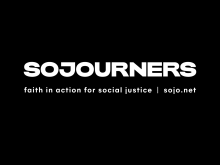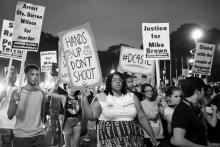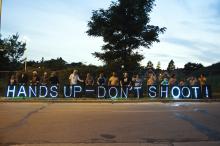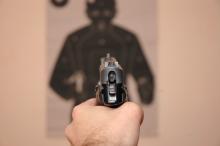police brutality
















ON AUG. 9, Michael Brown, an unarmed black teenager, was shot to death by Ferguson, Mo., police officer Darren Wilson. A collective groan was let out across social networks—people began the lament “Not again.”
Just four days prior, John Crawford III, a 21-year-old black man, had been gunned down by police in a Walmart in suburban Dayton, Ohio, without warning, while shopping for a BB gun. A few weeks earlier, Eric Garner, an African-American man, was choked to death by a New York City police officer.
For young black men, each incident is a reminder of how easily our lives can be taken away by police aggression. For the people in Ferguson, however, over-policing is all too familiar. In a city where 67 percent of the residents are black, there are only three black police officers on a force of 53.
A 2013 report from the Missouri attorney general’s office revealed just how bad relations are between officers and black citizens. Out of the 5,384 traffic stops made last year by the Ferguson Police Department, 86 percent of them targeted black drivers. Black drivers were searched and arrested at nearly twice the rate of white drivers, although contraband was found at a rate 13 percent less than that of white drivers.

Dr. King said: a “riot is the language of the unheard.”
What happens when folks do not feel like their voices are being heard?
They shout louder.
Rioting is what almost happened in Ferguson, and all of us who live in fragile neighborhoods with a backdrop of deep racial injustice need to pay attention.
In Ferguson, a close-knit community was devastated by yet another injustice. They wanted to be heard. But as peaceful marches began, they were met with unprecedented force.
Tears were met with teargas.
It was as if authorities were putting their hands up over their ears. So the people shouted louder – and the world began to pay attention.
At a fragile moment when emotions were running high, the people of Ferguson had to choose between rioting and nonviolent direct action in the streets. A very small group (many of them arguably out-of-state activists) resorted to some forms of property damage. And it caught the media’s attention.
Some might say it hijacked the headlines.
But that is not how I will remember Ferguson.

In Ferguson, an unarmed black teenager was killed by police. In reaction, thousands took to the streets in protest. However, rather than attempting to listen, the heavily militarized police immediately made a show of force with armored vehicles, assault rifles, riot gear, and tear gas. People tweeted photos and videos more reminiscent of scenes from Baghdad or Fallujah than of a little Midwestern suburb in America.
Tear gas and rubber bullets were fired into the crowd of peaceful protestors. Multiple reporters were assaulted and arrested. One cop was caught on video screaming “Bring it, all you f---ing animals! Bring it!” Another appeared to be indiscriminately pointing his rifle in people’s faces and yelling “I will f---ing kill you!”
This raises the question: Is what we saw night after night in Ferguson simply a matter of a few “bad apple” cops, a local isolated problem? Or is it indicative of a wider attitude of the police in relation to the use of violence and force? Is it an anomaly, or is this what police in fact consider normal and right? In an op-ed piece in the Washington Post, a 17-year veteran of the LAPD gives us what he believes to be good advice from the perspective of a cop:
“If you don’t want to get shot, tased, pepper-sprayed, struck with a baton or thrown to the ground, just do what I tell you. Don’t argue with me ... and don’t even think of aggressively walking towards me. ”
In one sense he is of course right. If a guy has a gun at your head you should definitely not argue, and just do what he says. But one is led to ask how this reasoning is substantially different from saying to a child, “Honey, when dad is drunk and gets mad, don’t talk back, just be real quiet.” That’s probably sound advice, too, but it begs the question: Is this the world we want to live in? Is that as good as we can do?

I’ve been calling it the Summer of Helplessness.
From the conflict in Gaza that has left more than 1,000 civilians dead, to the downing of Malaysia Airlines Flight 17 over the skies of Ukraine, to the Ebola breakout getting worse by the day, to the shooting of yet another unarmed black teenager here in the U.S., the news of late is enough to make a person feel paralyzed with helplessness and despair. My prayers these days are of the tired, desperate sort: How long, O Lord? Will you hide your face from us forever?
But when it comes to violence and oppression, we are rarely as helpless as we think, and this is especially true as the events unfolding in Ferguson force Americans to take a long, hard look at the ongoing, systemic racism that inspired so many citizens to protest in cities across the country this week.
I’ve heard from many of my white friends and readers who say they aren’t sure how to respond to the anger and grief they are watching on TV or hearing from their black friends. They want to be part of the solution but don’t know where start. They may even feel a little defensive when they hear people talking about white privilege or inaction on the part of white Christian leaders. I’m in the process of learning too, but as I’ve listened to people of color whose opinions I trust, I’ve heard them issue several calls to action we can all heed.

As America began to gear up for its incredibly wasteful (more than $40 trillion since 1972) and utterly futile “War on Drugs,” there were three critical federal actions that contributed to our current vastly over-militarized police forces.
In 1981, the Military Cooperation with Law Enforcement Act was passed. This law authorized military collaboration with civilian law enforcement agencies and dramatically expanded the Army’s participation in counterdrug efforts and included arming and training of local police with military grade weapons, free of charge, at the discretion of the Secretary of Defense.
Then, in 1984, Congress passed the Comprehensive Crime Control Act, supposedly to assist in controlling the crack cocaine infusion in urban communities. This law, tied to a civil forfeiture provision, allows law enforcement to seize property without a conviction, or even charges being levied, if a person is suspected of illegal drug activity.
Finally, in the 1990 National Defense Authorization Act (each year this bill funds our military) there was included a provision — “Section 1208” — that allowed the Secretary of Defense to transfer weapons and ammunition that was “suitable for use by such agencies in counter-drug activities.” This law was supposed to give police the firepower needed to “effectively” execute the Drug War. In the 10 years that followed, thousands of tanks, helicopters, grenade launchers, and assault rifles were granted to municipal police forces.
But the militarization of our police forces was not yet complete.
Enter the “War on Terror.”